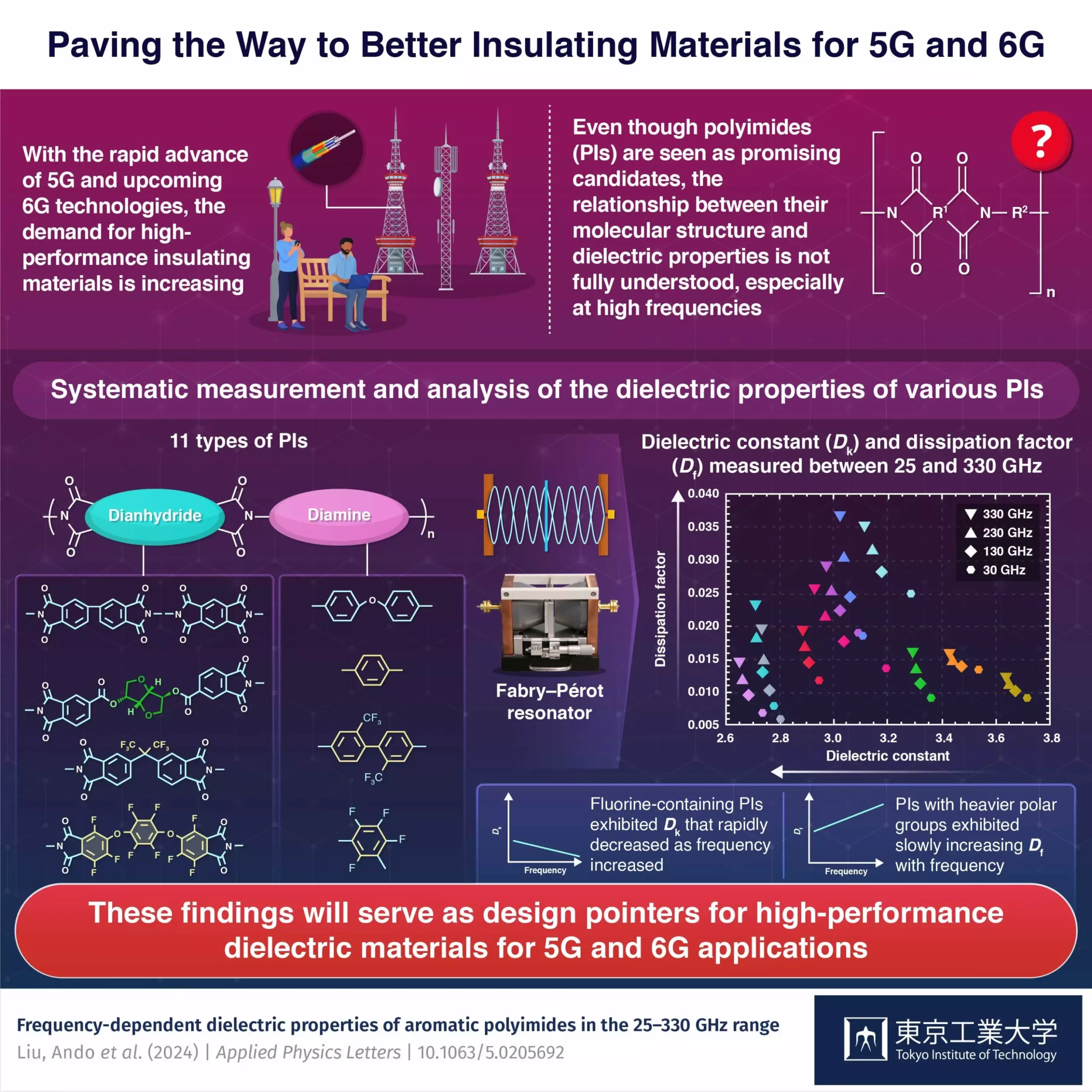As advancements in 5G technology pave the way for even faster and more reliable wireless communications, the focus is shifting towards developing technologies for 6G. However, one of the biggest challenges faced in both 5G and 6G is the detrimental effects of operating at extremely high frequencies, particularly approaching the terahertz range. Signal attenuation and interference become significant issues, making it harder to maintain signal integrity.
While glass- and ceramic-based insulating materials are currently prevalent in the industry, their high cost and complexity in fabrication make them unsuitable for mass-produced devices required for high-end 6G technology. Polymeric materials, particularly polyimides (PIs), are being considered as a potential alternative. These materials offer excellent thermal stability, mechanical toughness, flexibility, lightweight, and favorable dielectric properties.
A research team from the Tokyo Institute of Technology, led by Professor Shinji Ando, recently published a study in Applied Physics Letters exploring the dielectric properties of 11 different polyimides with varying molecular structures. The team aimed to bridge the existing knowledge gap in understanding the correlation between the molecular structure of PIs and their dielectric properties, particularly in the high-frequency range.
Using a Fabry–Pérot resonator, the researchers measured the dielectric constant (Dk) and dissipation factor (Df) of the polyimides in the 110–330 GHz range. The results showed that PIs with higher fluorine content exhibited lower Dk values, with a perfluorinated polyimide showing significantly lower Dk and smaller Df compared to other polyimides. The study also revealed a negative correlation between the increase in Df and the polar fraction of the polymer’s mass.
The findings of this study shed light on the dielectric qualities of polyimides and their potential for use in high-performance polymer-based insulating materials for 6G technologies. By enabling engineers to design materials with lower signal loss and improved signal integrity at high frequencies, polyimides could play a crucial role in the development of faster and more reliable telecommunications systems.
While the study marks a significant step towards understanding the dielectric properties of polyimides, further research, particularly in the THz range, will be essential to identify the best types of PIs for future applications. By continuing to explore the capabilities of polymeric materials like polyimides, researchers hope to unlock the full potential of 6G technology, paving the way for a new era of wireless communications.


Leave a Reply